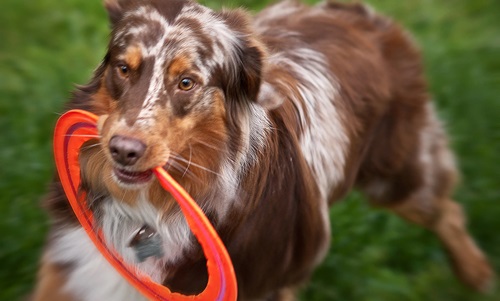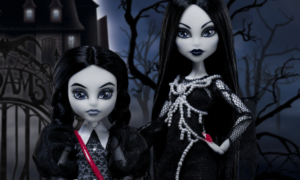Rollicking with your dog regularly will educate you about your dog’s personality and toughen the bond between you. By precluding tedium, furnishing exercise, and giving away an outlet for your dog’s instincts, play can ensure unhappy geste doesn’t develop.
What do dogs like to play?
What do tykes like to play? It depends on your dog’s personality. Watch what your canine does when agitated. Does your dog’s prey, snare, or hurdle affect you? trial with many nonidentical toys and, utilizing a toy, mimic your canine’s natural play geste.
Games
- Games fall into four main orders haul of war.
- Toys to exercise carry daggers and rubber rings Chase and recoup.
- Exercise balls and Kongs on cord Hide, seek, and probe.
- Can be played with people, toys, or food Hurdle and shake.
Squeaky toys encourage this type of play Whatever toys you exercise make sure they’re able for your dog. Check the toys regularly to ensure there are no fragile corridors that could be masticated off and swallowed. Have a selection of toys and change them every many days to keep your dog interested.
Basic rules of play
- Before you begin to play make sure you can fluently take effects down from your dog.
- However, educate the’ leave’ command, If not.
- Do not play rough-and-tumble wrestling games or have your canine to chase children.
- Both are instigative for your canine but can encourage games that are out of your control.
- Keep toys below midriff height so that you do not encourage your canine to spring up.
- Have constant, daily, play sessions at home and when out for walks.
- Play in short bursts of over five twinkles and polish whilst your canine is still keen to play.
- When rollicking use an instigative voice with parcels of praise and stimulant.
- For tykes that are keen to play only start the game when they’re serving the commodity you want similar to lying down still.
- This will encourage good geste.
Tidy toys down at the end of each play session noway coerce your dog to play Have fun!
Teaching your dog to play
This section is for tykes who haven’t learned to play with toys. It may be that your canine has had other tykes to play with or hasn’t learned to play with toys as a puppy dog. The following will support you in encouraging your canine to play with you and your toys.
Only have one canine at a time in the space whilst tutoring to play. You’ll presumably have to get down to the bottom position and keep your voice grandly- -pitched and intoxicated. Do not shove the toy towards the canine – especially towards the mouth or face. rather draw the toy down and grip it as if it’s a commodity special or delicate to peep at, but not have. Keep turning down from your canine and also sometimes drop the toy and catch it.

This game will encourage your canine to contend for the toy. When your canine does snare the toy has a short, instigative game of haul of war. For further sensitive tykes that are reticent to snare a toy, you may be suitable to encourage them by utilizing an old sock with bitsy pieces of rubbish in the toe. Start the game when your canine is constitutionally agitated and as your canine pulls at the sock to get to the food you can gently draw away.
Encourage your canine with gentle praising, erecting to agitated physical and vocabulary praise when your canine is more enthusiastic. tykes can also be encouraged to play with toys by utilizing a toy aimed to have food pushed into it. show off your canine the toy, allow your canine to whiff the food, and also roll the toy along the bottom. Your canine will follow it and also be awarded by being allowed to bite the food out. Your canine will associate the toy with food and will soon enjoy chasing the toy along the ground.
Tug of war
Some people shake the rollicking haul of war because they fear that it’ll encourage the canine to be checking and ambitious. utmost tykes detect haul of war games veritably instigative and if this is your canine’s favorite game he or she’ll detect ways to play that may be out of your control, for as grabbing apparel or stealing tea napkins.
But if you incite the games you’ll be suitable to set the regulations. Encourage your canine to snare the toy by excitedly stating “Take it ”, and at the same time remove the toy from your canine. When your canine has a good hold of the toy keep the interest by shaking the toy side to side, over and down, and back and on.
During the game stop lugging by stating “ leave ”( formerly – do not repeat), remove your grasp into your body, keep them still, and do not verbalize. Your canine may remain to lug but will ultimately release the grip. incontinently your canine lets go, breaks, and also starts the game again. For veritably strong tykes you may detect it easier to hold your canine’s collar and also allow go of the toy, this will reduce the excitement and competition for the toy.
Your canine will snappily get to play when asked and stop if you touch your canine’s collar or when your grasp is still and near to your body. To conserve control, sometimes stop and renew the game – only removing the toy entirely when you have perfected it. still, set paws on you or abduct the toy without being asked also incontinently go still and quiet, If your canine tries to snare your apparel.
Hide and seek
The following two games, hide and seek and searching, make use of your canine’s surprising sense of smell. Your canine will exercise a combination of wind scenting( smelling the air to detect you) and shadowing( smelling along the ground to follow where you have walked).

You might need someone to hold your canine or stay until your canine is in another space also hide behind a door or lounge and call them. ( When you first start this game you may need to call your canine further than formerly.) As soon as your canine finds you, praise and give a food pleasure. You can play the same game in the theater or safe areas whilst out for a turn. When your canine is smelling and not observing you, crouch down on a long lawn or hide behind a tree and call them. Flashback to be veritably agitated when they detect you.
Searching games
Pet tykes do not have to hunt for their food but you can exercise their chops to detect their favorite toy. Your canine must be keen to play with a toy. Start by briefly joking with your canine with the toy and also, whilst your canine is observing, hide it behind cabinetwork or, if outdoors, throw it into a long lawn.
Encourage your canine to go and detect it by stating in an agitated voice “Where is it? ”. When your canine understands the game you can make it harder by not letting your canine watch where you hide the toy. Flashback no way to set the toy where you do not want your canine to go – do not hide it in your favorite flowerbeds! If your canine isn’t interested in toys you can play the same game but hide portions of your canine’s regale or delicious food treats.
Pounce and shake
Hurdle and shake games are frequently played singly by the proprietor. The canine throws the toy in the air and also catches or pounces on it. The canine will frequently shake the toy until the squeak is removed so the games must be headed. treble toys can be exercised to get your canine’s concentration and you can throw them for your dog.





More Stories
April Donation Drive Update! – MidwayUSA Foundation
April Donation Drive Update! – MidwayUSA Foundation
U.S. Shooting Paralympians to qualify for Paris 2024 Games in Anniston/Talladega Alabama